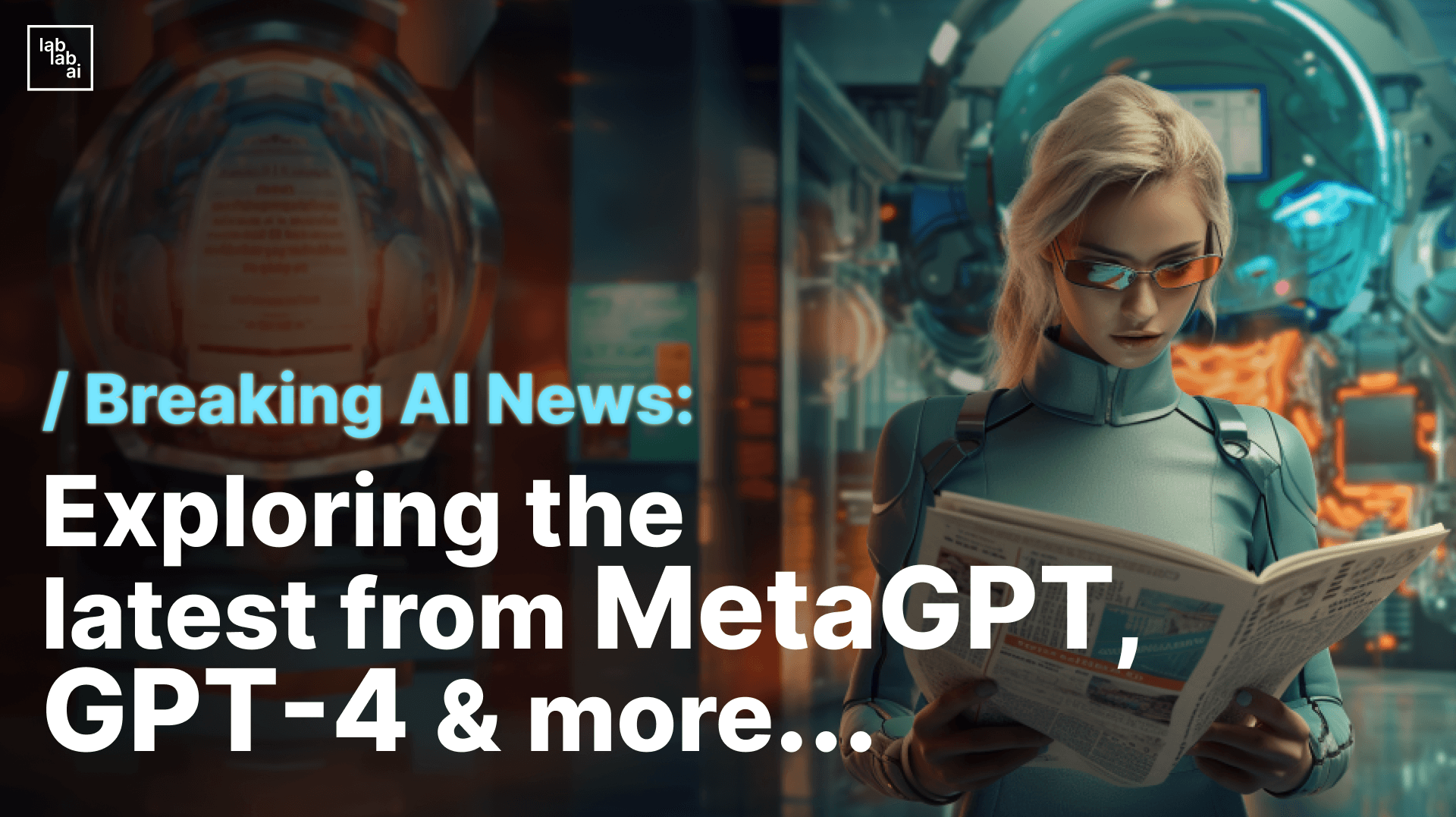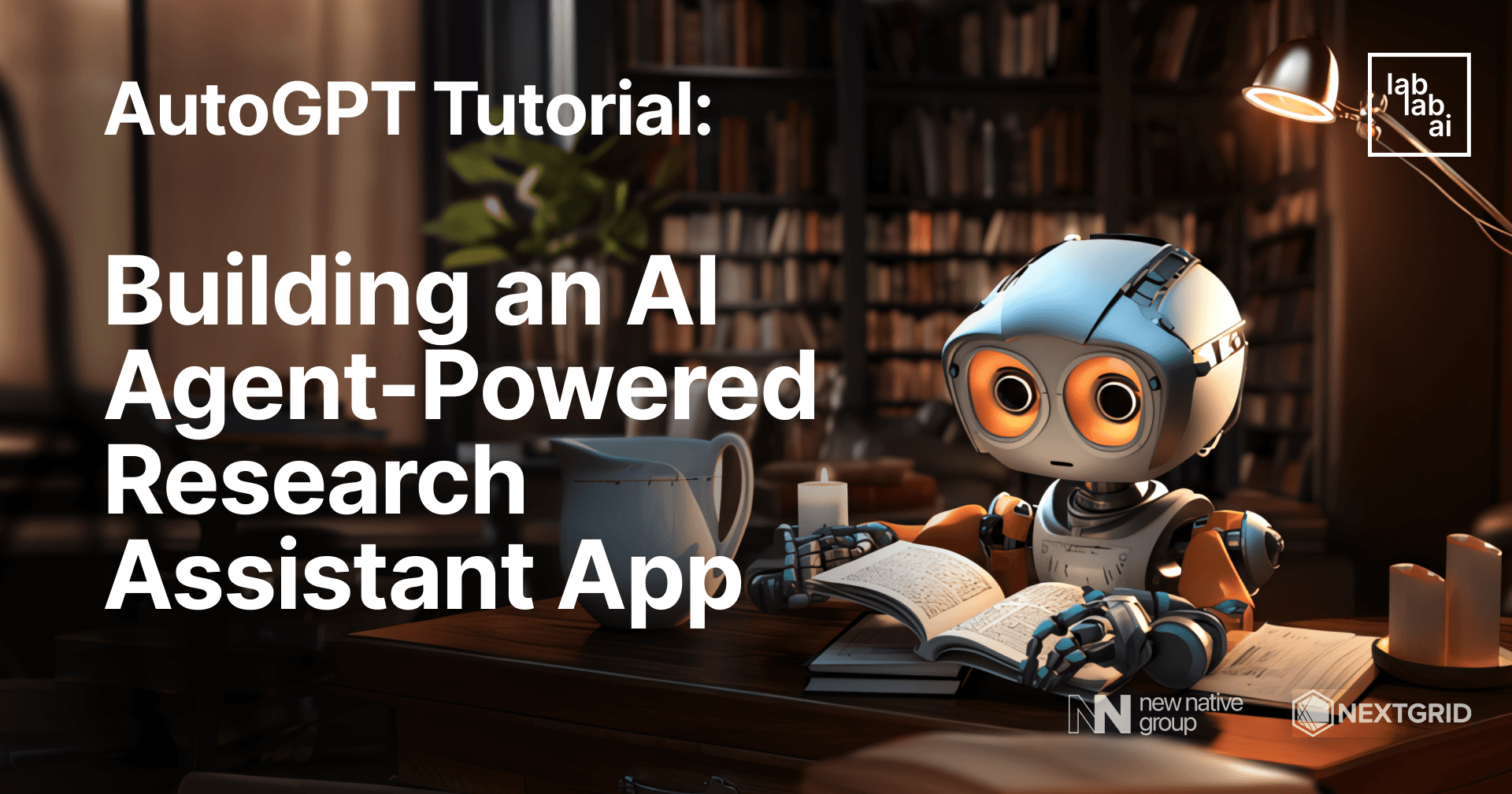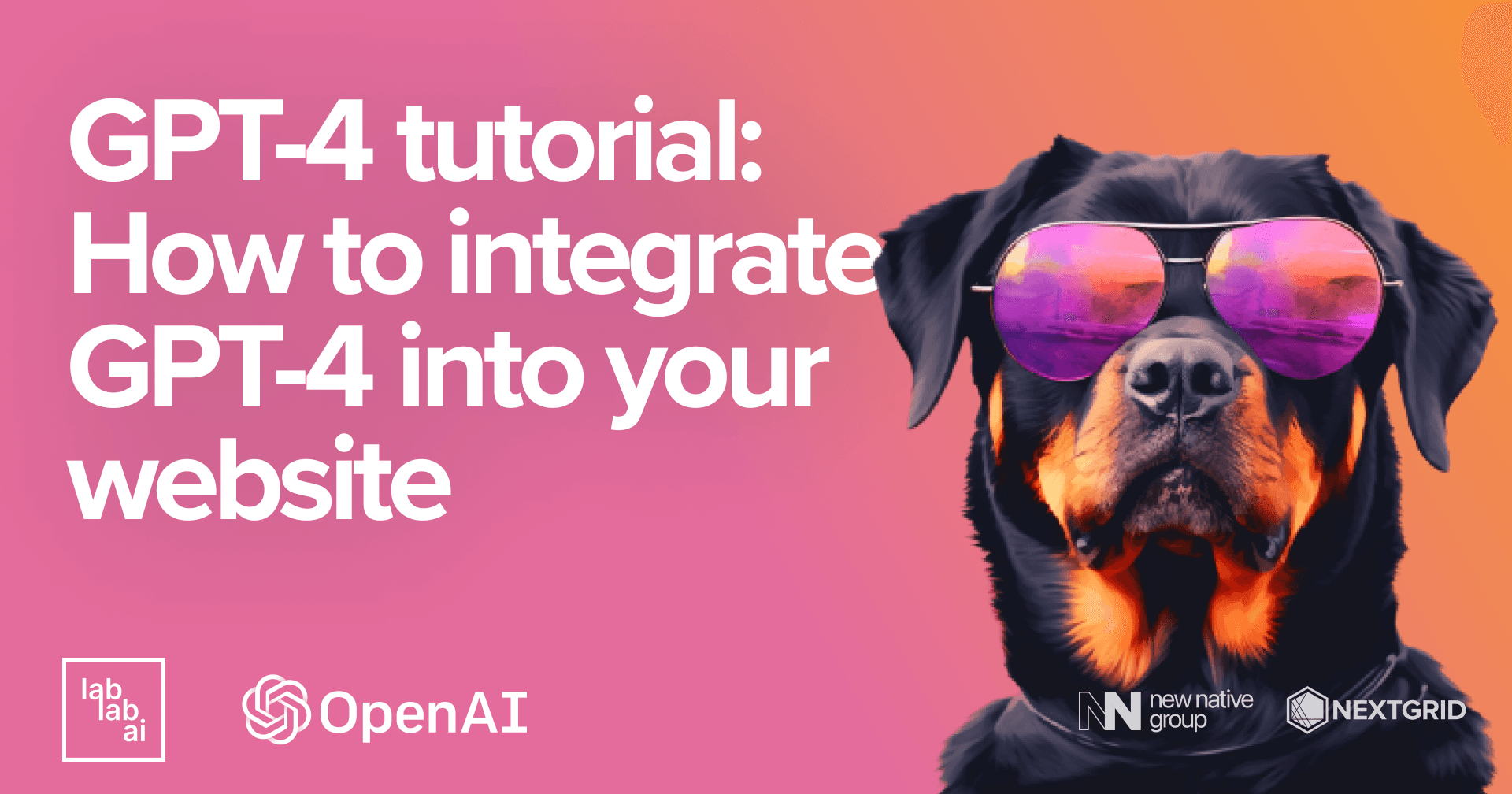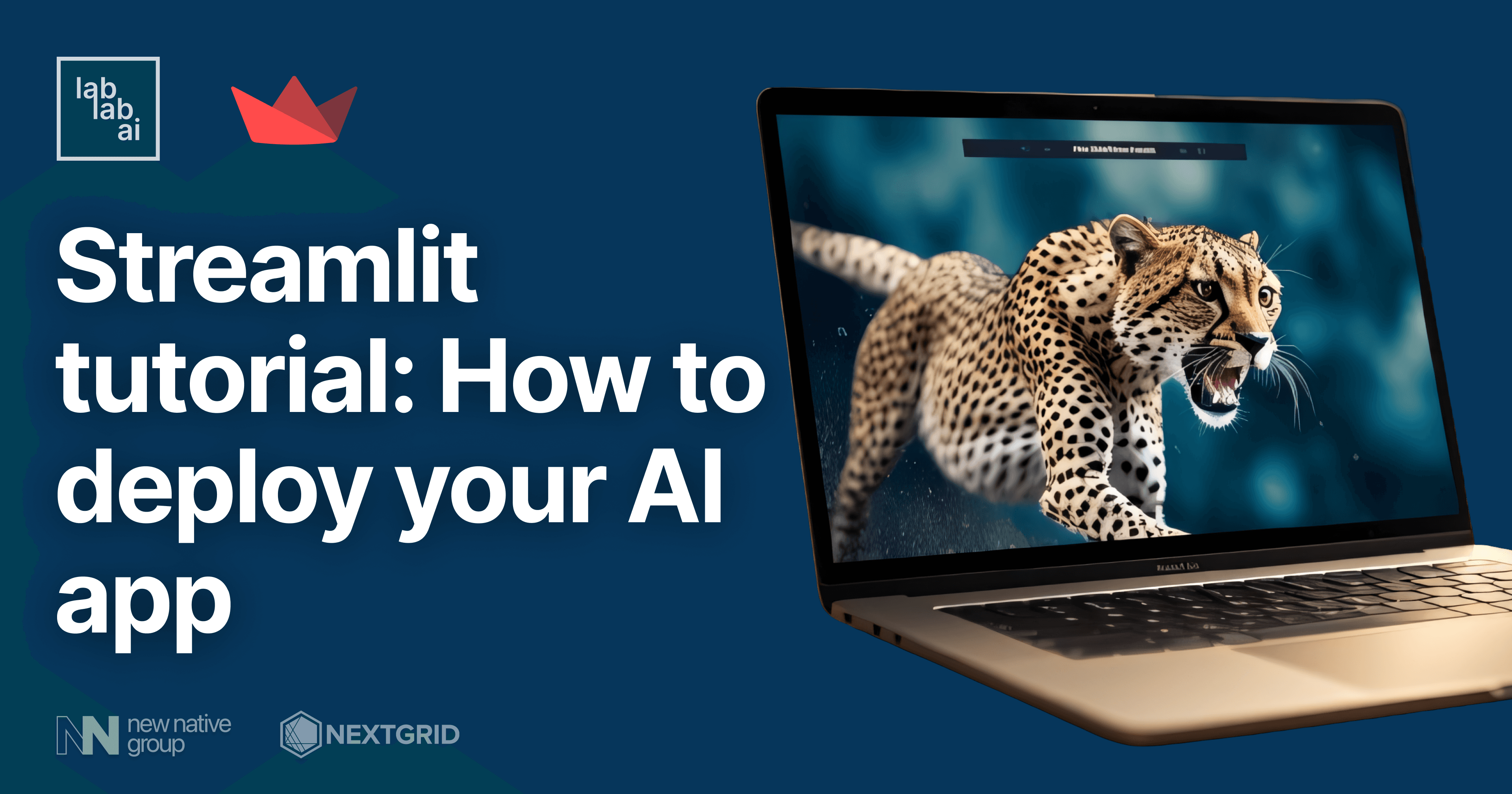This Week in AI: Exploring the Latest from MetaGPT and GPT-4 and more..

In a world where technology is advancing at an unprecedented pace, the field of artificial intelligence (AI) stands at the forefront of innovation. From voice-based interactions to 3D object generation, AI is transforming the way we live, work, and interact with the digital world.
For developers, researchers, and AI enthusiasts, the constant evolution of AI tools and frameworks offers endless opportunities for exploration and creativity. Whether it's building intelligent chatbots, automating code documentation, or creating voice-driven applications, the possibilities are boundless.
In this article, we'll take a deep dive into some of the most exciting and innovative AI projects and tools available today. These projects are not only pushing the boundaries of AI technology but also providing valuable resources for those participating in AI hackathons, where rapid prototyping and experimentation are key.
MetaGPT: Revolutionizing Software Development with Multi-Agent Collaboration
MetaGPT is a groundbreaking multi-agent framework that is transforming the way software development is approached. By taking a single line of requirement as input, MetaGPT outputs a comprehensive array of development components, including user stories, competitive analysis, requirements, data structures, APIs, and documents. It's like having an entire software company at your fingertips, complete with product managers, architects, project managers, and engineers.
The core philosophy of MetaGPT is "Code = SOP(Team)," where SOP (Standard Operating Procedures) is materialized and applied to teams composed of Large Language Models. This approach allows for a collaborative software entity capable of handling complex tasks.
For hackathon participants, MetaGPT offers an exciting opportunity to explore new paradigms in software development. Imagine typing a command like python startup.py "Design a RecSys like Toutiao" and receiving a complete analysis, design, and even a full project for just a few dollars in GPT-4 API costs. The installation process is straightforward, with options for traditional installation or Docker, and the configuration is flexible to suit different environments.
MetaGPT also provides a unique investment simulation where users can act as investors, contributing a certain dollar amount to an AI company and observing how the company utilizes the investment. This feature adds an extra layer of engagement and realism to the experience.
The project is backed by an Arxiv paper titled "MetaGPT: Meta Programming for Multi-Agent Collaborative Framework," authored by a team of researchers and developers. With 18k stars on GitHub and a growing community of contributors, MetaGPT is poised to become a vital tool for AI enthusiasts, researchers, and hackathon participants looking to push the boundaries of collaborative AI.
Whether you're looking to simulate a startup experience, explore multi-agent collaboration, or simply experiment with cutting-edge AI technology, MetaGPT offers a rich playground for innovation and exploration. It's not just a tool; it's a new way of thinking about software development, and it's waiting for you to dive in.
Now, let's move on to the next tool in our list.
GPT4Tools: Bridging Language and Visual Models for Enhanced Interaction
GPT4Tools is a cutting-edge intelligent system that stands at the intersection of language and visual models, enabling seamless interaction with images during a conversation. Developed by a team of researchers including Lin Song, Yanwei Li, Rui Yang, Sijie Zhao, Yixiao Ge, and Ying Shan, GPT4Tools is based on Vicuna (LLaMA) and utilizes 71K self-built instruction data to control multiple visual foundation models.
For AI hackathon participants, GPT4Tools presents an exciting opportunity to explore the integration of text and visual data. It's not just about processing language; it's about teaching Large Language Models (LLMs) to use tools through self-instruction and LoRA (Language model for Reasoning and Adaptation).
Key Features and Capabilities
-
Centralized Control of Visual Models: GPT4Tools can automatically decide, control, and utilize different visual foundation models, providing a unified interface for various image-related tasks.
-
Self-Instruction and Fine-Tuning: Users can teach their own LLM to use tools with simple refinement. The fine-tuning process is well-documented, allowing for customization and extension.
-
Web GUI and Customization: With options for serving with a web GUI and customizing the used tools, GPT4Tools offers flexibility for developers to tailor the system to their needs.
-
Pretrained Models and Datasets: The project includes pretrained GPT4Tools models with Vicuna-13B and a dataset for self-instruction, along with detailed instructions for data generation and model training.
-
Open Source and Community-Driven: With 565 stars on GitHub and an active community of contributors, GPT4Tools is open for collaboration and extension.
Hackathon Applications and Insights
For hackathon enthusiasts in the AI space, GPT4Tools offers a playground to experiment with the fusion of language and visual data. Whether it's building a conversational agent that can interpret and generate images or creating a system that can understand and execute visual instructions, the possibilities are vast.
Imagine a scenario where a user can describe an image, and the system generates the visual representation on the fly. Or a situation where a user can ask questions about an image, and the system provides detailed answers by analyzing the visual content. These are just a few examples of what can be achieved with GPT4Tools.
The project also provides a glimpse into the future of AI, where models are not confined to text or visuals alone but can seamlessly integrate and interpret multiple data types. It's a step towards more intuitive and human-like interactions with AI systems.
GPT4Tools is more than a tool; it's a vision of what AI can become. It's an invitation to explore, innovate, and push the boundaries of what's possible. For AI hackathon participants, it's a challenge and an opportunity to create something truly groundbreaking.
Awesome AI-Powered Developer Tools: A Curated Collection for Modern Development
Awesome AI-Powered Developer Tools is a curated GitHub repository that brings together a diverse array of AI-driven tools designed to assist developers in various aspects of software development. With 917 stars on GitHub, this collection is a treasure trove for developers, especially those participating in AI hackathons, looking to leverage the power of AI in their workflow.
Categories and Highlights
-
IDEs: Tools like Cursor, an IDE with chat, edit, generate, and debug features, and Mutable, a web-based IDE integrated with a chatbot and GitHub, offer enhanced coding environments.
-
Assistants: From GitHub Copilot X, a VS Code extension with chat and text generation, to Codeium, an assistant with autocomplete and natural language search, these tools provide intelligent assistance in coding.
-
Agents: Smol Developer, Aider, Mentat, and others act as CLI agents that can generate repositories, make changes, and even migrate applications from one language or framework to another.
-
Documentation: Tools like Trelent, Docify, and Mintlify Writer offer VS Code extensions to generate docstrings, streamlining the documentation process.
-
Continuous Integration Bots: BitBuilder and Sweep are GitHub integrations that generate pull requests from issues, automating parts of the development workflow.
-
Foundation Models and Platforms: Platforms like E2B and SuperAGI host LLM-based agents, while Magic promises an assistant and an underlying foundation model trained on code.
-
OpenAI Plugins: ChatWithGit and Code ChatGPT Plugin are examples of plugins that enable enhanced interactions with GitHub and directories of files.
-
Search and Testing: Tools like Bloop and Buildt offer natural language search for repositories, while OctoMind and Carbonate provide automated testing solutions.
Hackathon Applications and Insights
For AI hackathon enthusiasts, this repository is a goldmine of tools and resources that can be leveraged to build innovative solutions. Whether it's code completion, refactoring, debugging, documentation, or testing, these AI-powered tools offer a competitive edge.
- Rapid Prototyping: With tools like Smol Developer and GPT Engineer, participants can quickly generate repositories and prototypes, accelerating the development process.
- Intelligent Assistance: Assistants like GitHub Copilot X and Codeium provide real-time guidance, code completion, and refactoring, enhancing coding efficiency.
- Automated Testing and Documentation: Tools like OctoMind and Trelent automate testing and documentation, ensuring quality and saving valuable time.
- Collaborative Development: Platforms like E2B and Morph Rift enable hosting and merging of code generation agents, fostering collaboration and integration.
The Awesome AI-Powered Developer Tools repository is more than just a list; it's a gateway to the future of development where AI plays a central role. From individual developers to large teams, these tools offer something for everyone, and for hackathon participants, they provide a toolkit to innovate, experiment, and excel.
Whether you're looking to enhance your coding environment, automate mundane tasks, or explore new ways to collaborate and build, this collection offers a glimpse into the future of AI-driven development. It's a must-visit resource for anyone looking to stay ahead of the curve and embrace the next wave of technological advancement.
Google Assistant's Pivot to Generative AI: A New Era of Digital Interaction
Google Assistant, a familiar name in the world of digital assistants, is reportedly undergoing a significant transformation. According to an internal email reported by Axios, the Assistant team is exploring the integration of Large Language Model (LLM) technology to supercharge its capabilities. This shift represents a strategic move by Google to align itself with the latest advancements in AI and redefine the way we interact with digital interfaces.
The Shift in Vision
The decision to pivot to generative AI comes after Google's realization that it had been complacently relying on a form of "fake AI" for a decade. The Assistant team sees a massive opportunity to leverage LLM technology, and organizational changes are underway to achieve this vision. The change is not merely experimental; it's a response to what other companies have publicly demonstrated, and Google is in a hurry to catch up.
The Challenge and Opportunity
While LLMs have powered chatbots and assistants, their practical evolution in this tech corner is yet to be proven. Traditional services like Assistant, Alexa, and Siri have functioned more like Mad Libs, where users provide subjects and verbs for simple digital interactions. The question arises: Is it an improvement if the assistant's response is informed by the entirety of the Western canon?
The novelty of LLMs in everyday tasks might wear off, as seen with asking Alexa to tell a joke. However, Google is betting on an interface capable of handling both simple and complex interactions. The ability to follow the thread of a conversation and provide contextually rich responses could redefine the user experience.
Implications for AI Hackathon Participants
For those in the AI hackathon space, Google's pivot to generative AI offers several insights and opportunities:
-
Exploring Conversational Depth: The integration of LLMs opens the door to more meaningful and context-aware conversations with digital assistants. Hackathon participants can experiment with creating systems that go beyond simple commands to engaging dialogues.
-
Balancing Novelty and Utility: While the novelty of poetic weather reports may wear off, the challenge lies in finding the right balance between entertainment and practicality. How can AI be both fun and functional?
-
Redefining Interfaces: The move towards generative AI signifies a shift in how we think about digital interfaces. It's not just about commands and responses; it's about interaction, understanding, and adaptability. Hackathon projects can explore new paradigms in human-AI interaction.
Google Assistant's pivot to generative AI is more than a technological upgrade; it's a philosophical shift in how we approach digital interaction. It challenges the status quo and invites us to think differently about what AI can be and do.
For AI enthusiasts, researchers, developers, and especially hackathon participants, this development offers a glimpse into the future of AI-driven communication. It's a call to innovate, to push boundaries, and to explore the uncharted territories of AI. Whether the pivot proves successful or not, it's a bold step forward, and one that will undoubtedly shape the discourse and direction of AI in the years to come.
Magic123: 3D Object Generation from a Single Image
Magic123 is a groundbreaking PyTorch implementation that enables high-quality 3D object generation from a single image. Utilizing both 2D and 3D diffusion priors, this technology represents a significant advancement in the field of 3D generation. With over 1.1k stars on GitHub, Magic123 has attracted attention from researchers and developers alike. Here's an in-depth look at this innovative project.
Overview and Features
Magic123 leverages the power of diffusion models to create 3D objects from a single image. The implementation is built upon the Stable-DreamFusion repository and offers the following key features:
-
Training Convergence: Magic123 provides a demo example to showcase the training convergence, allowing users to compare results with or without textual inversion.
-
Effects of Joint Prior: The system's ability to increase the strength of 2D prior leads to more imagination, more details, and less 3D consistencies.
-
Installation and Pre-trained Models: The repository includes detailed instructions for installation on Ubuntu systems and provides links to download pre-trained models for 3D diffusion prior and depth estimation.
-
Usage and Customization: Magic123 offers scripts and commands to preprocess images, run the model for single or multiple examples, and even perform ablation studies. It also provides options for running without textural inversion, allowing for quicker testing.
-
Tips and Tricks: The documentation includes valuable insights and best practices for optimizing performance, such as fixing camera distance, tuning time steps for defusion noise, and using normals as latent.
-
Acknowledgements and Citations: Magic123 builds upon and gets inspiration from various research works and open-source projects, acknowledging the contributions of the broader community.
Implications for AI Hackathon Participants
Magic123's capabilities offer exciting possibilities for AI hackathon participants:
-
Rapid 3D Prototyping: Magic123's ability to generate 3D objects from a single image can accelerate prototyping and development in hackathons, enabling innovative 3D applications.
-
Exploration of Diffusion Models: Participants can delve into the world of diffusion models, exploring how 2D and 3D priors interact to create detailed and consistent 3D objects.
-
Customization and Experimentation: With detailed documentation and customizable scripts, Magic123 offers a playground for experimentation, allowing participants to tweak parameters and explore different approaches.
Magic123 stands as a testament to the potential of AI in transforming the way we approach 3D object generation. Its ability to create high-quality 3D objects from a single image using both 2D and 3D diffusion priors opens new horizons for researchers, developers, and enthusiasts.
For AI hackathon participants, it offers a rich platform for exploration, innovation, and creativity. Whether you're looking to build a 3D visualization tool, experiment with diffusion models, or simply explore the cutting edge of AI-driven 3D generation, Magic123 is a must-try resource.
Functionary: A Chat Language Model for Interpreting and Executing Functions
Functionary is an innovative chat language model designed to interpret and execute functions or plugins. Developed by MeetKai, this Python-based project is built on Llama 2 and offers a unique approach to integrating functions within a conversational AI framework. With 52 stars on GitHub, Functionary is an emerging tool that showcases the potential of combining natural language processing with functional execution.
Key Features and Capabilities
-
Interpretation and Execution: Functionary can understand when to execute a function and interpret its output, triggering functions only as needed.
-
JSON Schema Objects: Function definitions are provided as JSON Schema Objects, similar to OpenAI GPT function calls, offering a standardized way to define and call functions.
-
OpenAI Compatible Server: Functionary includes a server setup that allows integration with OpenAI, enabling seamless communication between the language model and external functions.
-
Use Cases: The project outlines various real-world applications, such as trip planning in travel and hospitality, property valuation in real estate, and customer support in telecommunications.
-
Training and Hyperparameters: Functionary utilizes standard HuggingFace Trainer and provides detailed information on hyperparameters, training process, and data sources.
-
Roadmap: The project's roadmap includes plans for Llama 2 13B model training, OpenAPI specification-based plugin support, fast inference server, streaming support, and real-world usage examples.
Implications for AI Hackathon Participants
Functionary's unique approach to integrating functions within a chat language model offers exciting possibilities for AI hackathon participants:
-
Dynamic Conversational Interfaces: Participants can build chatbots that not only understand user queries but also execute functions, offering a more interactive and dynamic user experience.
-
Custom Function Integration: The ability to define and call custom functions allows for the creation of specialized chatbots tailored to specific industries or use cases, such as travel planning or customer support.
-
Experimentation with Language Models: Functionary provides a platform for experimenting with language models and function execution, enabling participants to explore new paradigms in conversational AI.
Functionary represents a step forward in the convergence of natural language processing and functional programming. By enabling chat language models to interpret and execute functions, it opens new avenues for creating intelligent, responsive, and versatile chatbots.
For AI hackathon participants, it offers a rich playground for innovation, allowing the creation of chatbots that go beyond simple question-and-answer interactions. Whether you're looking to build a travel planning bot, a real estate valuation assistant, or simply explore the cutting edge of conversational AI, Functionary is a project worth exploring.
Autodoc: Auto-Generating Codebase Documentation with LLMs
Autodoc is an experimental toolkit designed to auto-generate codebase documentation for Git repositories using Large Language Models (LLMs) like GPT-4 or Alpaca. With 1.5k stars on GitHub, this project by Context Labs is in the early stages of development but showcases a promising approach to automating documentation within codebases. Here's a comprehensive look at Autodoc and its potential impact.
Key Features and Capabilities
-
Automated Documentation Generation: Autodoc can be installed in a repository within minutes and indexes the codebase through a depth-first traversal, calling an LLM to write documentation for each file and folder.
-
Live Documentation: The generated documentation lives within the codebase, allowing developers to ask specific questions about the codebase and receive detailed answers with reference links back to code files.
-
Continuous Integration (CI) Pipeline Integration: In the near future, documentation will be re-indexed as part of the CI pipeline, ensuring that it is always up-to-date.
-
Querying and Indexing: Autodoc provides a CLI tool for querying the documentation and a detailed process for indexing your own repository.
-
Examples and Use Cases: The repository includes examples of how Autodoc can be used, such as an Autodoc chatbot trained on the Solana validator codebase.
-
Community and Contribution: Autodoc encourages community involvement and contributions, with detailed information on how to contribute and a Discord community for collaboration.
-
Future Plans: Autodoc's roadmap includes support for self-hosted models like Llama and Alpaca, making model selection configurable, and improving the querying experience.
Implications for AI Hackathon Participants
Autodoc's approach to auto-generating codebase documentation offers exciting possibilities for AI hackathon participants:
-
Streamlining Documentation: Participants can leverage Autodoc to automate the documentation process within their projects, saving time and ensuring consistency.
-
Enhancing Code Understanding: By embedding documentation within the codebase, Autodoc facilitates a deeper understanding of the code, enabling more effective collaboration and development.
-
Experimentation with LLMs: Autodoc provides a real-world application of LLMs in code documentation, offering a platform for experimentation and exploration of AI-driven documentation techniques.
Autodoc represents a novel approach to codebase documentation, leveraging the power of Large Language Models to automate and enhance the documentation process. While still in the early stages of development, it offers a glimpse into the future of AI-powered code documentation.
For AI hackathon participants, it provides a tool that can streamline the development process, enhance code understanding, and offer a platform for experimentation with AI-driven documentation. Whether you're looking to simplify documentation in your hackathon project or explore new frontiers in AI-powered code understanding, Autodoc is a project worth exploring.
Vocode: Building Voice-Based LLM Agents Made Easy
Vocode is an open-source library that empowers developers to build voice-based Large Language Model (LLM) applications in minutes. With 1.6k stars on GitHub, Vocode offers a modular approach to create real-time streaming conversations with LLMs and deploy them to various platforms such as phone calls, Zoom meetings, and more. Here's a detailed look at Vocode and its potential to revolutionize voice-based applications.
Key Features and Capabilities
-
Voice-Based Conversations: Vocode allows developers to spin up a conversation with system audio, set up phone numbers that respond with LLM-based agents, and even dial into Zoom calls with LLM-driven interactions.
-
Out-of-the-Box Integrations: Vocode provides integrations with various transcription services (Deepgram, AssemblyAI, Google Cloud, etc.), LLMs (ChatGPT, GPT-4, Anthropic, etc.), and synthesis services (Rime.ai, Microsoft Azure, Google Cloud, etc.).
-
Quickstart and Self-Hosting: The library includes quickstart guides for self-hosted applications and offers a simple installation process using pip.
-
Community and Contribution: Vocode actively seeks community maintainers and contributors, providing a roadmap and contribution guide to encourage collaboration.
-
Use Cases: From building personal assistants to voice-based chess apps, Vocode offers easy abstractions and integrations to create a wide range of voice-driven applications.
-
License and Documentation: Vocode is released under the MIT license, and detailed documentation is available at docs.vocode.dev.
Implications for AI Hackathon Participants
Vocode's capabilities offer exciting opportunities for AI hackathon participants:
-
Rapid Voice App Development: Vocode's modular design and out-of-the-box integrations enable rapid development of voice-based applications, making it a valuable tool for hackathon projects.
-
Experimentation with Voice Interfaces: Participants can experiment with voice-driven interactions, exploring new paradigms in human-AI communication.
-
Integration with Various LLMs and Services: Vocode's support for various LLMs and transcription services allows for customization and flexibility in building voice-based agents.
Vocode represents a significant advancement in the field of voice-based LLM agents. Its modular design, ease of use, and extensive integrations make it a powerful tool for developers looking to explore and innovate in the realm of voice-driven AI.
For AI hackathon participants, Vocode offers a platform for creativity, experimentation, and rapid development. Whether you're looking to build a voice-based personal assistant, a voice-driven game, or explore new frontiers in voice-based AI, Vocode is a must-try resource.
Conclusion: A Glimpse into the Future of AI Innovation
The landscape of AI is ever-evolving, and the projects we've explored in this article are a testament to the creativity, innovation, and potential that lie within the field. From generating 3D objects from a single image with Magic123 to automating codebase documentation with Autodoc, these tools and frameworks are pushing the boundaries of what's possible with AI.
For AI enthusiasts, developers, researchers, and especially participants in AI hackathons, these projects offer a rich playground for exploration, experimentation, and development. They represent not only the current state of AI but also a glimpse into the future, where voice-based agents like Vocode can converse with us, and chat language models like Functionary can execute functions within a conversation.
The open-source nature of many of these projects encourages collaboration, contribution, and community-driven growth. It's an exciting time to be involved in AI, and these tools provide a pathway for anyone interested in diving into the world of artificial intelligence.
Whether you're a seasoned AI professional or just starting your journey, the projects highlighted in this article offer opportunities to learn, innovate, and contribute to the ever-growing field of AI. The future is bright, and these tools are paving the way for a new era of AI-driven solutions and experiences.
Happy exploring, building, and innovating!
Don't miss out on the chance to be part of the AI revolution. Follow us on twitch.tv and stay tuned for upcoming streams, collaborations, and exclusive insights into the world of AI. See you there!



